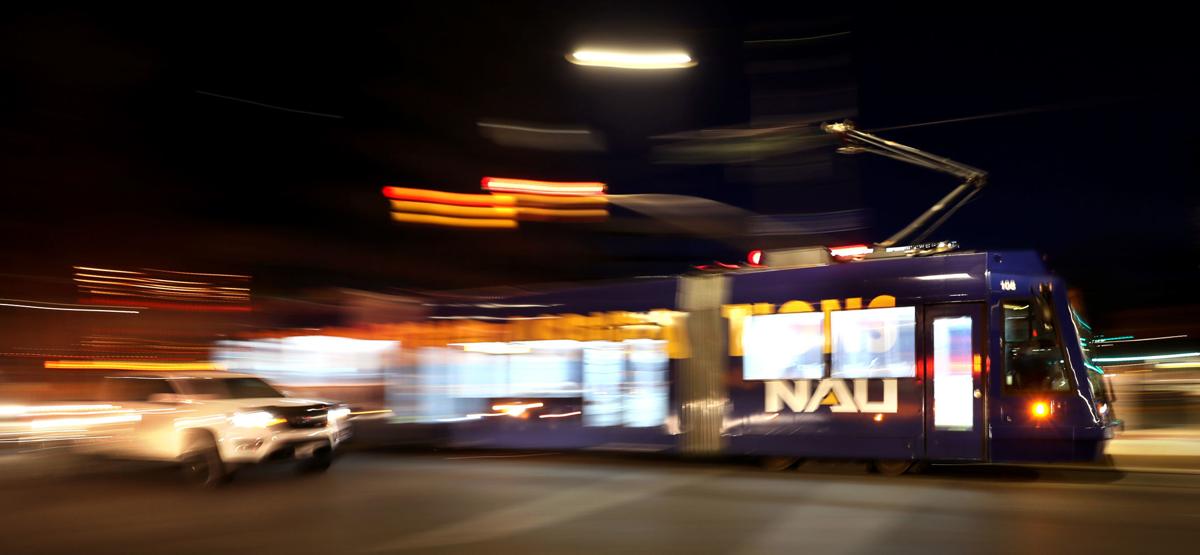Tucson councilmember Lane Santa Cruz’s first motion, to give the Tucson Department of Transportation a name properly identifying its function for current and future residents, passed unanimously during a council retreat.
“I made the motion because I feel it really reflects the vision that the council and the city has moving forward and how we think about a model that’s centered on people and the multiple ways that people move,” Santa Cruz said about adding “mobility” to the official name of the city’s Transportation Department.
The department’s new name: Tucson Department of Transportation and Mobility.
While fixing arterial and collector roads is a priority, the mission is to go further, according to Santa Cruz.
“I would agree the way to make (roads) safer for people to be on is to have that basic need met, but then it’s also the other elements that everybody has a piece of the road,” Santa Cruz said.
“Right now, even with bikes and people walking, cars are seen as the priority and how we move them and how quickly we move them, and people in any other mode have to negotiate with that vehicle.”
Santa Cruz said most of their colleagues view it in a similar way.
“I believe a majority of my peers on the council have a sense that that needs to shift, what it looks like I think maybe doesn’t always all align, but I definitely think we can bring people along,” the councilmember said.
“Any time you’re talking about shifting the culture of the roads, if you are that person that only drives and that is the only way you get around, you’re not really sympathetic or know the experience of people who ride the bus or people who use a bike, or people who walk to get to the place they need to go to.”
Community Engagement
It’ll take ideas from her department, the council and residents to build projects in Tucson’s best interest, said Diana Alarcon, director of the Department of Transportation and Mobility.
City streets see about 4,000 people injured and more than 50 people killed yearly, according to the department.
“In February of last year, council approved the Complete Streets policy. So as we’ve been moving forward we’ve had those opportunities to add bike lanes and create those other modes, make the ADA improvements so it’s more accessible from a walkable point. We’re putting those into play as well,” Alarcon said during the retreat.
She also announced new ways to engage with the community by looking for input from younger generations. Officials will visit high schools to see how they “envision the future of the city of Tucson,” Alarcon said.
The department is also developing a speaker bureau where transportation and mobility officials will engage with neighborhood associations and community groups and understand how to connect them to different city corridors.
Moving Tucson forward
In the three months as Ward 1’s representative, Santa Cruz’s office has engaged constituents and push forward on how “we want roadways to meet the needs of everyone in the city.”
First on the councilmember’s mind are the freeways, I-10 and I-19. Santa Cruz calls the interstate a “physical barrier that divides my district from the rest of the city,” and an area experiencing a high number of collisions between 29th street and Silverlake and Grant roads.
“A lot of those are vehicle on vehicle, but you also have a lot of collisions of pedestrians and bicyclists at those intersections,” Santa Cruz said. “Those intersections aren’t designed for anything else other than vehicles, and even then, they’re not designed for vehicles because we keep having those collisions taking place.”
Santa Cruz said the plan is to look at retrofitting the intersections at the interstates and making the frontage roads safer, leading to connected, multi-use pathways.
“How do you make it safe so families feel like, ‘Oh, my kids can cross, walk,’ and do that without being afraid of the impact that the freeway has,” Santa Cruz said.
For all Tucsonans, Santa Cruz is emphasizing projects, including green infrastructure, that protect residents from the heat during the summer.
“We live in one of the hottest places in the country,” Santa Cruz said, “so how do we also make it feasible for people to feel encouraged to walk and bike or use the bus because there’s appropriate shade throughout that network.”





